Understanding Silver ETFs: Your Gateway to Precious Metal Investment
Have you ever considered investing in precious metals like silver, but felt intimidated by the complexities of buying, storing, and selling physical bullion? Many aspiring investors face this dilemma. Fortunately, there’s a modern and accessible solution: **Silver Exchange-Traded Funds (ETFs)**. These financial instruments offer a convenient, liquid, and often cost-effective way to gain exposure to the dynamic silver market. In this comprehensive guide, we’ll delve into what Silver ETFs are, how they operate, their key advantages and potential drawbacks, the important tax implications to consider, and the various types available to help you make informed investment decisions.
Silver, often referred to as “poor man’s gold,” has a rich history as both a store of value and an industrial metal. Its unique properties make it indispensable in various modern technologies, contributing to its dual appeal for investors. Understanding this intrinsic value is crucial when considering silver as an investment.
What Are Silver ETFs and How Do They Work?
A **Silver Exchange-Traded Fund (ETF)** is an investment fund that trades on stock exchanges, much like individual stocks. Its primary goal is to track the price of silver. Unlike directly owning physical silver, an ETF allows you to invest in silver without the hassles of storage, insurance, or security. Think of it as owning a small piece of a much larger silver hoard, or a claim on silver’s price movements, all managed by a professional fund.
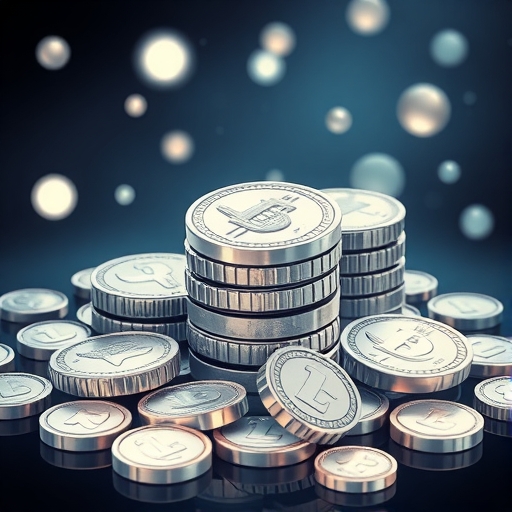
Investing in physically-backed Silver ETFs offers several distinct advantages over direct physical ownership or other investment vehicles. These benefits contribute to their popularity among a wide range of investors.
- They eliminate the need for personal storage, thereby avoiding the associated costs and security concerns of holding physical bullion.
- They provide a high degree of liquidity, allowing investors to buy and sell shares easily on stock exchanges during market hours.
- They offer transparency, with fund managers regularly disclosing their holdings and providing clear information about the underlying silver assets.
There are primarily two main types of Silver ETFs based on their underlying assets. The most common are **physically-backed ETFs**, which hold actual silver bullion in secure vaults. For example, the iShares Silver Trust (SLV) is a well-known physically-backed fund. Each share of such an ETF typically represents a specific, fractional quantity of physical silver. When you buy a share, you’re essentially buying a claim to that silver, held in trust by a custodian. Other ETFs, sometimes referred to as **futures-based ETFs**, use financial instruments like **futures contracts** to replicate silver’s price movements. These contracts are agreements to buy or sell silver at a predetermined price on a future date. While they aim to track the spot price of silver, their mechanics introduce different considerations, including potential **counterparty risk**.
Understanding the fundamental differences between physically-backed and futures-based Silver ETFs is crucial for making an informed investment decision. Each type carries its own set of characteristics, risks, and benefits.
| Feature | Physically-Backed ETFs | Futures-Based ETFs |
|---|---|---|
| Underlying Asset | Actual silver bullion in secure vaults | Silver futures contracts |
| Direct Metal Exposure | Yes, shares represent fractional ownership of physical silver | Indirect, exposure through derivative contracts |
| Counterparty Risk | Minimal, primarily related to custodian | Present, related to the futures contract counterparties |
| Storage Costs | Included in expense ratio for vaulting | Not applicable for physical storage, but futures roll costs exist |
The operational backbone of an ETF involves a unique “creation and redemption” mechanism that helps keep its market price aligned with its **Net Asset Value (NAV)** – the true value of its underlying assets. This process involves specialized entities called **Authorized Participants (APs)**. When demand for an ETF’s shares rises, APs create new shares by delivering a specified amount of silver (or cash, depending on the fund) to the ETF issuer in exchange for new ETF shares. Conversely, if ETF shares trade at a discount to their NAV, APs can redeem existing ETF shares for the underlying silver or cash, effectively reducing the supply of shares and pushing the market price back towards the NAV. This continuous arbitrage mechanism ensures that the ETF’s price on the stock exchange generally stays in sync with the current **spot price** of silver, providing investors with reliable price exposure.
The Strategic Advantages of Investing in Silver ETFs
Investing in Silver ETFs offers a compelling set of benefits that make them attractive for a diverse range of investors. We’ll explore why these funds have become a popular choice for those looking to add precious metals to their portfolios.
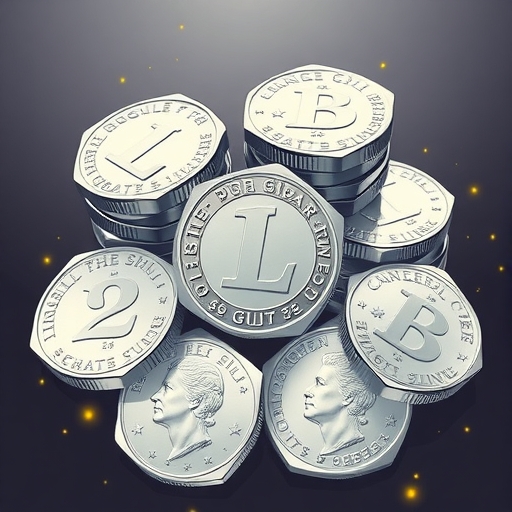
Silver ETFs provide a streamlined way to participate in the silver market, offering several strategic advantages that appeal to both seasoned and novice investors. These benefits often outweigh the complexities associated with other forms of silver investment.
| Advantage | Description |
|---|---|
| Diversification | Low correlation with traditional assets, acting as a hedge against inflation and market volatility. |
| Liquidity | Traded on major exchanges, allowing easy buying and selling throughout the day. |
| Cost Efficiency | Avoids physical storage, insurance, and security costs associated with bullion ownership. |
| Accessibility | Simple to trade through a standard brokerage account, democratizing access to silver. |
First and foremost, Silver ETFs offer significant **diversification** benefits for your investment portfolio. Silver, like gold, has historically shown a low correlation with traditional asset classes such as stocks and bonds. This means that when equities or other markets face downturns, silver prices might move independently or even appreciate, acting as a valuable **hedge against inflation** and market volatility. Beyond its role as a monetary metal, silver also has substantial **industrial demand**—it’s a critical component in electronics, automotive manufacturing, solar panels, and medical devices. This dual demand profile provides a unique layer of stability and growth potential compared to other commodities.
Another key advantage is **liquidity**. Silver ETF shares are traded on major stock exchanges throughout the day, just like any other stock. This offers investors immense flexibility, allowing for easy entry and exit from positions. You can buy or sell shares at market prices whenever the exchanges are open, providing far greater liquidity than dealing with physical silver, which often involves finding buyers and sellers, negotiating prices, and arranging secure transfers.
**Cost efficiency** is also a major draw. Holding physical silver comes with various expenses, including storage fees, insurance premiums, and security costs. These can add up significantly over time. Silver ETFs, however, eliminate these logistical burdens. While they do charge annual **management fees** (known as the **expense ratio**), these are generally a small percentage of your investment and are often more economical than the cumulative costs of physical ownership.
Furthermore, Silver ETFs provide unparalleled **accessibility and convenience**. You can buy and sell shares through your existing brokerage account, making silver investment as simple as trading stocks. This bypasses the complexities of the futures markets, which can be daunting for individual investors, and eliminates the physical storage hassles entirely. It truly democratizes access to the precious metals market for everyday investors.
Finally, Silver ETFs offer remarkable **flexibility**. Whether you’re looking to speculate on short-term price movements, hedge against other positions in your portfolio, or integrate silver for long-term wealth preservation, ETFs can accommodate various investment strategies. Some ETFs that invest in silver mining companies may even offer **dividend potential**, providing income in addition to capital appreciation. Most ETFs also regularly disclose their holdings, offering **transparency** into what the fund owns.
In summary, the strategic appeal of Silver ETFs stems from their ability to combine the benefits of precious metal exposure with the practical advantages of a modern, exchange-traded financial product. These factors make them a cornerstone for many diversified portfolios.
- They provide a simple way to gain exposure to silver price movements without the complexities of physical ownership.
- Their tradability on stock exchanges ensures high liquidity, making it easy to enter or exit positions.
- The inherent diversification benefits and inflation-hedging properties of silver are accessible through a cost-effective vehicle.
Navigating the Risks and Disadvantages of Silver ETFs
While Silver ETFs present numerous advantages, it’s crucial for investors to understand the inherent risks and potential disadvantages before committing their capital. No investment is without its downsides, and these funds are no exception.
Potential investors should thoroughly assess the specific risks associated with Silver ETFs to ensure they align with their individual risk tolerance and investment objectives. Being aware of these challenges can help in making more robust investment decisions.
| Risk Factor | Description |
|---|---|
| Market Volatility | Silver prices can fluctuate significantly due to economic, geopolitical, and supply/demand factors. |
| Tracking Error | The ETF’s performance may not perfectly match the underlying silver price due to fees and operational costs. |
| Counterparty Risk | For futures-based ETFs, the risk that a counterparty fails to meet its obligations. |
| Liquidity (for less popular ETFs) | Lower trading volumes can lead to wider bid-ask spreads, increasing transaction costs. |
The primary risk associated with Silver ETFs is **market volatility and price risk**. Silver prices are notoriously volatile, influenced by a complex interplay of economic uncertainties, geopolitical events, supply and demand dynamics, and investor sentiment. Just as prices can rise rapidly, they can also fall sharply, directly impacting the value of your ETF shares. If the price of silver declines, your investment in a Silver ETF will follow suit, potentially leading to losses.
Another significant concern is **tracking error**. This refers to the difference between an ETF’s performance and the performance of its underlying benchmark, which is typically the spot price of silver. Tracking error can arise from several factors, including the fund’s **management fees** and operational expenses, which slightly erode returns over time. It can also stem from the costs associated with buying and selling the underlying physical silver or futures contracts, or from inefficiencies in the fund’s rebalancing strategy. While ETFs are designed to track closely, a perfect match is rarely achievable.
For ETFs that utilize **futures contracts** or other **derivative instruments** rather than holding physical silver, **counterparty risk** becomes a relevant consideration. This is the risk that the financial institution or entity on the other side of a futures contract might fail to fulfill its obligations. While such risks are generally mitigated by robust regulatory frameworks and collateralization, they are still present and can impact the fund’s performance.
While we highlighted liquidity as an advantage, it can also be a **potential disadvantage** for certain less popular Silver ETFs. Some funds may have lower daily trading volumes. Lower volumes can lead to wider **bid-ask spreads**, meaning there’s a larger difference between the price you can sell for and the price you can buy for. This can increase transaction costs, especially for larger trades, potentially eroding returns.
Lastly, the **management fees**, or **expense ratio**, while generally lower than the cost of physical storage, are an ongoing cost that will eat into your returns regardless of the ETF’s performance. Over long investment horizons, even small fees can accumulate and significantly impact your total returns. Therefore, always monitor the expense ratio of any Silver ETF you consider.
Investors must exercise caution and conduct thorough due diligence, paying close attention to the specific structure and expense ratio of any Silver ETF before making an investment. Understanding these risks is fundamental to responsible investing.
- Always review the ETF’s prospectus to understand its investment strategy and underlying assets.
- Compare the expense ratios of different Silver ETFs to minimize ongoing costs.
- Monitor market news and economic indicators that can influence silver prices and overall market volatility.
Tax Implications and Regulatory Landscape for Silver ETF Investors
Understanding the tax implications of investing in Silver ETFs is as important as understanding their mechanics, as tax rules can significantly impact your net returns. These rules vary by jurisdiction, so let’s look at a couple of key regions.
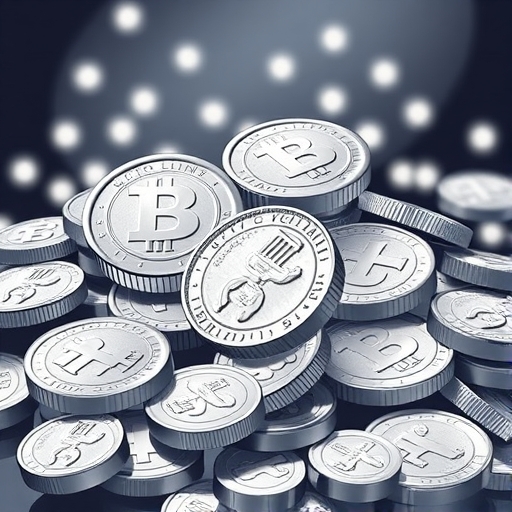
Navigating the tax landscape for Silver ETFs can be complex, especially with varying regulations across different countries. It is always advisable for investors to consult with a tax professional to understand their specific obligations and optimize their investment strategy.
In the **United States**, the **Internal Revenue Service (IRS)** generally classifies gains from physically-backed Silver ETFs held in taxable brokerage accounts as **collectibles**. This classification has a notable impact on **capital gains tax**. For holdings held for more than one year (long-term capital gains), these are typically taxed at a higher rate of up to 28%, which is distinct from the lower long-term capital gains rates applied to most stocks and mutual funds. If you hold shares for one year or less (short-term capital gains), any profits are taxed as **ordinary income** at your regular income tax rate. It’s important to note that if you hold Silver ETFs within tax-advantaged accounts like **Individual Retirement Accounts (IRAs)** or **401(k)s**, the tax treatment upon withdrawal will generally follow the rules of that specific retirement account, typically taxed as ordinary income upon distribution, depending on whether it’s a traditional or Roth account.
For investors in **India**, the tax rules for Silver ETFs, which were allowed by the **Securities and Exchange Board of India (SEBI)** in November 2021, have their own specifics.
| Investment Period | Tax Treatment (India) |
|---|---|
| Short-Term Capital Gains (Investment Period ≤ 1 year) | Taxed according to the investor’s individual income tax slab rate. |
| Long-Term Capital Gains (Investment Period > 1 year) |
|
This change in long-term capital gains taxation from April 1, 2025, reflects an evolving regulatory environment and aims to align the tax treatment of silver with other financial assets. SEBI’s authorization of silver ETFs has led to significant growth in **Assets Under Management (AUM)** in the Indian market, crossing 13,500 crore rupees by January 2025, underscoring increasing investor interest and regulatory support for these products. SEBI also establishes clear rules for transparency, reporting, and investor protection, ensuring a structured market.
Key Considerations and Types of Silver ETFs for Informed Decisions
Before you invest in any Silver ETF, it’s vital to conduct your due diligence and align your choices with your personal financial strategy. Making an informed decision requires understanding various factors, including your investment goals, risk tolerance, and the specific characteristics of different ETF types.
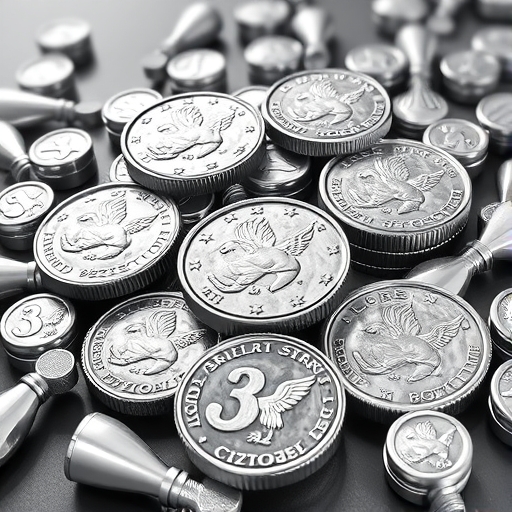
Careful consideration of several key factors can significantly enhance the success of your Silver ETF investment. Thorough research and alignment with your financial objectives are paramount.
- Clearly define your investment horizon, whether short-term speculation or long-term wealth preservation.
- Evaluate your personal comfort level with the high volatility often associated with silver prices.
- Understand the implications of inflation and interest rates on silver’s performance, as these can be significant drivers.
First, consider your **investment goals** and **risk tolerance**. Are you looking for long-term wealth preservation, a hedge against inflation, or short-term trading opportunities? Your approach will dictate the type of Silver ETF that best suits you. Silver is known for its volatility, so ensure your risk tolerance aligns with potential price swings.
Second, always **monitor management fees (expense ratio), tracking error, and fund liquidity**. A lower expense ratio means more of your money stays invested. A minimal tracking error indicates the fund is doing a good job of mirroring silver’s price. For liquidity, check the average daily trading volume and **bid-ask spreads**; higher volumes and tighter spreads generally mean easier and cheaper trading.
Third, stay informed about broader **market conditions**. Factors such as overall demand and supply dynamics of silver, global macroeconomic trends, inflation expectations, currency fluctuations, and changes in interest rates can all significantly influence silver prices and, consequently, Silver ETF values. Pay particular attention to **industrial demand** trends, especially in sectors like solar panel production, electronics, and medical devices, as these are major drivers for silver consumption.
Finally, let’s explore the various **types of Silver ETFs** available, each with distinct features:
- Physically-Backed Silver ETFs: These funds hold actual silver bullion in secure vaults. They aim to directly track the spot price of silver. Examples include the iShares Silver Trust (SLV) and the Aberdeen Standard Physical Silver Shares ETF (SIVR). These are often preferred by investors seeking direct exposure to the physical commodity without the logistical challenges.
- Futures-Based Silver ETFs: Instead of holding physical silver, these ETFs invest in silver futures contracts. While they also aim to track silver prices, their performance can sometimes diverge due to factors like futures contract roll costs.
- Silver Mining Company ETFs: These funds don’t directly track silver’s price but invest in the stocks of companies involved in silver mining and exploration. Examples include the iShares MSCI Global Silver and Metals Miners (SLVP) and the Global X Silver Miners ETF (SIL). Their performance is influenced by both silver prices and the operational efficiency and profitability of the underlying mining companies. They might offer dividend potential.
- Leveraged and Inverse Silver ETFs: These are designed for sophisticated, short-term traders. Leveraged ETFs aim to amplify returns (e.g., 2x or 3x) based on silver’s daily price movements, while inverse ETFs aim to profit when silver prices fall. Examples include the ProShares Ultra Silver ETF (AGQ) and the ProShares UltraShort Silver ETF (ZSL). Due to their complex structures and daily rebalancing, they are generally not suitable for long-term holding.
- Actively Managed Silver ETFs: Unlike passively managed funds that simply track an index, these ETFs have a professional team actively managing investments, aiming to outperform the market or a specific benchmark. The Sprott Physical Silver Trust (PSLV) is an example, though it’s structured as a closed-end fund rather than a pure ETF, it offers similar benefits.
Remember that Silver ETFs can often be held in retirement accounts like **IRAs** and **401(k)s**, offering potential tax advantages. For those looking to invest regularly, a **Systematic Investment Plan (SIP)** can be a sensible strategy, allowing you to dollar-cost average your investment over time.
Conclusion
Silver ETFs offer a powerful and accessible pathway for investors to gain exposure to the dynamic precious metal market. By eliminating the logistical burdens associated with physical silver ownership, such as storage and security, and providing enhanced liquidity and cost efficiency, they have streamlined the investment process. However, like any financial instrument, a thorough understanding of their associated risks—including market volatility, tracking error, and potential counterparty risk—as well as their specific tax implications across different jurisdictions, is absolutely paramount. By conducting diligent research, carefully considering your individual investment goals and risk tolerance, and staying informed about market conditions, Silver ETFs can indeed serve as a flexible and valuable component within a well-diversified investment strategy.
Frequently Asked Questions (FAQ)
Q: What is the main difference between physically-backed and futures-based Silver ETFs?
A: Physically-backed Silver ETFs hold actual silver bullion in secure vaults, aiming to track the spot price directly through real assets. Futures-based Silver ETFs, on the other hand, invest in silver futures contracts, replicating price movements through derivative instruments, which introduces counterparty risk and potential roll costs not present in physically-backed funds.
Q: Are Silver ETFs suitable for long-term investment?
A: Silver ETFs can be suitable for long-term investment as a means of diversification and a hedge against inflation and market volatility. However, investors should be aware of silver’s inherent price volatility, ongoing management fees (expense ratios), and specific tax treatments (e.g., collectibles tax in the US) that might impact long-term returns compared to other asset classes. It’s crucial to align them with your personal investment goals and risk tolerance.
Q: What are the tax implications of Silver ETFs in the US?
A: In the United States, gains from physically-backed Silver ETFs held in taxable brokerage accounts are generally classified as “collectibles” by the IRS. This means long-term capital gains (assets held over one year) are typically taxed at a higher rate, up to 28%, compared to the lower rates for most stocks. Short-term capital gains (assets held one year or less) are taxed as ordinary income. If held in tax-advantaged accounts like IRAs or 401(k)s, tax treatment follows the rules of the specific retirement account upon withdrawal.
Disclaimer: This article is for informational and educational purposes only and does not constitute financial advice. Investing in Silver ETFs involves risks, including the potential loss of principal. Before making any investment decisions, consult with a qualified financial advisor to determine suitability for your specific financial situation.


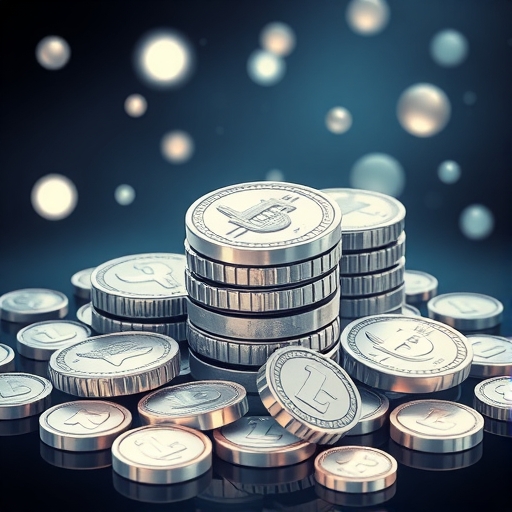
No responses yet